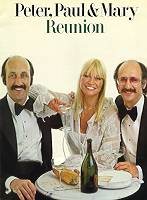
Peter, Paul & Mary
REUNION TOUR PROGRAM
THE 'US' DECADE
IN 1960 three young people with aims for modest musical success came together
to form a singing group. They called themselves "Peter, Paul and Mary".
The name had a pleasant biblical ring to it which seemed suited to the
folk songs they planned to perform, but also Peter Yarrow, Noel Paul Stookey
and Mary Travers wanted to affirm their participation as individuals. "We
felt it should be us, not some entity that was replaceable," explains
Mary.
They put themselves on the line beginning with this choice, and
they put themselves on the line many times over in the next several years
both professionally and politically, as they evolved their unique and infectiously
optimistic blend of folk music, straight talk and social commitment. They
were entertainers par excellence. Audiences came away from their
performances full of goodwill and feelings of well-being. But people took
seriously what they had to say, and they in turn took their effect on people
seriously.
"Our interaction was attractive because they saw us opening up
to each other" says Peter. "That connection was so profound, I feel, that
it did sincerely indicate that our communication was more than entertainment."
A young man sang The Great Mandala in court in defense of his position
as a conscientious objector and won his CO status. The same song was inscribed
on the gravestone of a soldier killed in Viet Nam, at a request he had
made to his wife in the event of death.
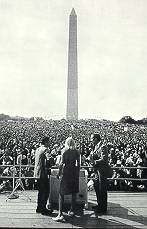 The
extraordinary decade in which the trio flourished saw popular music become
one of the dominant expressions of the culture, a culture torn by the youth
revolt, the sexual revolution, conflicting attitudes about the war in Viet
Nam, civil rights, and the shocking assassinations of President John F.
Kennedy, Robert Kennedy and Martin Luther King. In the midst of chaos,
PP&M's star rose beyond their farthest imaginings. Folk music was not
exactly a vehicle for grand ambitions at the time, and they had no way
of knowing they were on the verge of a musical explosion that would thrust
them into a whole new sphere of visibility and consequence. The
extraordinary decade in which the trio flourished saw popular music become
one of the dominant expressions of the culture, a culture torn by the youth
revolt, the sexual revolution, conflicting attitudes about the war in Viet
Nam, civil rights, and the shocking assassinations of President John F.
Kennedy, Robert Kennedy and Martin Luther King. In the midst of chaos,
PP&M's star rose beyond their farthest imaginings. Folk music was not
exactly a vehicle for grand ambitions at the time, and they had no way
of knowing they were on the verge of a musical explosion that would thrust
them into a whole new sphere of visibility and consequence.
They sang their own songs and the songs of others, never taking
the words lightly. If one of them found a line or an idea untenable or
untrue, the group would discuss it, argue it, reconsider it until the issue
was resolved. And they worked on their music in the same way. It was this
sharing, vulnerability and ultimate trust in each other, along with their
leavening humor; which gave them strength as a group and appealed to their
audiences. "We had some wonderful rules for working," Mary confides. "you
could fight all you wanted to before you hit the stage, but onstage you
looked at your idealistic vision of the other person...The discipline of
performing together was really to share something bigger than any one of
us could make by ourselves."
By the time the sixties were drawing to a close the group had
produced eleven albums, made thousands of appearances worldwide, and had
amassed numerous gold and platinum albums, a "Grammy" and other awards.
They had marched in Selma for civil rights and on Washington against the
war in Viet Nam. They had performed in dozens of benefit concerts for causes
in which they believed. And they had imbedded in the national consciousness
their love and respect for each other, for their country, for people everywhere,
and for life.
THE 'ME' YEARS
Then, as the decade ended, with the group still enjoying
undiminished popularity, Peter, Paul and Mary made the announcement that they
were dissolving the group. It took a lot of people by surprise. The relentless
pace of concert appearances, recording and traveling had begun to take it's
toll. Paul wanted to spend more time with his family, Peter and Mary didn't want
to form a new group, " because we had really felt all the way through that
it was the three of us." They embarked upon their individual odysseys, and
their parting was seen by some as symbolizing the end of an era.
Perhaps because they had never courted such stardom in the
first place, had never expected to become such a coalescing force, they were
able to make the transition to a more private existence with the same remarkable
energies and grace that had marked their careers together.
PETER
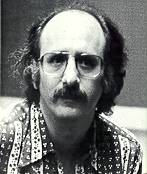 Peter
Yarrow talks about the past eight years. Soon after the group broke up, he
decided with his wife Mary Beth to move to California with their two small
children, Elizabeth and Christopher, and establish a closer way of living.
"Over that period of time I think the only thing could ever have equaled
what PP&M had were our families, our children." They settled into an
airy house in Malibu overlooking the Pacific. Peter
Yarrow talks about the past eight years. Soon after the group broke up, he
decided with his wife Mary Beth to move to California with their two small
children, Elizabeth and Christopher, and establish a closer way of living.
"Over that period of time I think the only thing could ever have equaled
what PP&M had were our families, our children." They settled into an
airy house in Malibu overlooking the Pacific.
Peter continued to write music and to perform. He made a
couple of solo albums and began producing records for others. He continued to
involve himself in those causes that mattered to him. He went to Chile at
Allendes behest to represent North America in a song festival of support. He
organized "Survival Sunday". A hugely successful benefit concert in
Los Angeles to endorse the United Nations' five-week session on world
disarmament. "I am moved to do something in the face of of
indifference," he volunteers, "to step in even though no one else
seems interested."
He contributed his efforts to ERA benefits, witnessing his
influence upon his children with pride when daughter Elizabeth decided to donate
the contents of her piggy bank to the cause, eschewing the chemistry set she had
been saving for.
And he has completed co-producing an animated version of 'Puff
The Magic Dragon" for an upcoming CBS television special.
Another major effort was the creation of The Festival of New
Music, conceived as a continuing series for discovering and developing new
songwriters. "The world of music is highly competitive and reaches for a
broad common denominator which really doesn't allow a new kind of oddball
voice," says Peter. The Festival receives over 500 tapes from writers each
time it is produced- there have been four of them in the past two and a half
years- and has brought forth ten new songwriters. "They are chosen not just
for their craft but also for what they have to say."
One of the songs Peter co-wrote in recent years was the single
hit for Mary MacGregor, Torn Between Two Lovers. The current songs are
not couched in what he terms "the flagwaving language of the 'sixties, but
in the language of now, which is trying to be as realistic, as open, as
unself-deceptive as possible. Inherent in the new songs of PP&M, I believe,
is that premise".
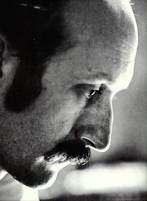 PAUL PAUL
Noel Paul Stookey experienced a religious conversion in the
mid-'sixties. He had been profoundly affected by the ease of his success, and by
what he felt to be the disparity between his public idealism and the erosion of
his private life. He found himself being separated by long distances and time
from his family. "For three or four years it had been very exciting to do
something that seemed as natural as conversation," he explained. "To
get up on the stage and talk about things that occurred to me and have people
applaud, put it on a record, pay for it, buy it, was staggering and very
heady."
But after a while he says, "I began to look for a firmer
basis, as a result of being involved with the music." A lot of music he did
at the time reflected that search-The House Song, The Good Times We Had, Love
City, Hymn. They didn't seem to be very far afield from what PP&M were,
in terms of expressing those things that were heartfelt. "Also we seemed to
do a lot of Gospel music, the import of which I never really understood until
after my conversion. Then these songs took on incredible significance."
Finally he, his wife Betty and daughter Elizabeth moved to a 67 acre farm on the
coast of Maine. "Moving to the country was a way of understanding what was
real," he explains. "There are more responsibilities. People become
more precious because there are fewer of them." Two more daughters were
born there, Kate and Anna.
"I left the group with a vengeance," he adds.
"I was not going on the road. But how could I not sing or write
music, or at least perform for my daughters' schools?" And he started over
again, only with the difference that these were small community events or an
occasional large benefit. "The subject matter changed. Many songs I do now
have what could be called a Christian emphasis." he made four solo albums
that reveal "where I have lived, what my values are."
He converted one floor of an old henhouse on his property into
a recording studio, another into an animation studio, for his Neworld Media
productions. There is also a workshop and living quarters for visiting artists
who may rent the facilities.
"I have become aware that in my most ingenuous moments I
am a vessel, a tool, an instrument. I suspect now that love is not generated from a human spirit but in fact flows through it. So now when I sing for
people and they applaud, part of what they are applauding I feel I can applaud
along with them."
Eight years later, as a result of those pressures of the time,
the need to be with his family, the sense of a continued growth in God, Noel
feels relaxed about his renewed relationship with Peter and Mary. Having
thrashed out many issues which had not been resolved at the time of their
breakup, they can accept each other again. "We are at a very nice place
now," he says.
MARY
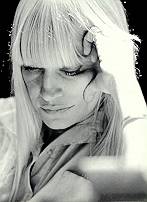 Before
Mary Travers added her voice to the trio, she had been what she calls "a
hobby performer." As part of PP&M, she confesses, "I never talked,
never made an introduction. In the beginning I was too terrified and in the end
too role-bound." So learning to confront an audience, to conduct a band, to
handle the whole responsibility became her challenge. And she learned. Before
Mary Travers added her voice to the trio, she had been what she calls "a
hobby performer." As part of PP&M, she confesses, "I never talked,
never made an introduction. In the beginning I was too terrified and in the end
too role-bound." So learning to confront an audience, to conduct a band, to
handle the whole responsibility became her challenge. And she learned.
Besides keeping to an arduous schedule of club and concert
appearances, she hosted several daytime talk shows and a syndicated radio show,
wrote and starred in six television specials for the BBC, played in summer
stock, and made five solo albums along the way (the most recent "It's in
Everyone of Us," for Chrysalis.) She also lectures at campuses on
"Society and it's Effect on Music." Having been asked to speak on the
reverse issue, she concluded after some thought that music "is an answer to
a question society poses first. It is an articulation of the question."
Juggling these activities with her single-parent
responsibilities towards daughters Erika and Alicia has been demanding but
balancing. "The reality of raising children offsets the unreality of a
performer's life." She is loving and proud, wryly complaining that there is
hardly anything left in her wardrobe to call her own anymore.
Mary's commitment to larger causes has involved her in events
for ERA, women's liberation, anti-nuclear reactor groups and various political
campaigns. "They are all part of the same package.' she observes.
"Civil rights was really a question of human rights, ERA is a question of
human rights, the quality of life in terms of pollution is human rights again.
They all have to do with the rights of individuals in society."
She reflects on her current and earlier activism. "It was
never a profitable thing to be involved in politics. You don't make more money
and you don't get more attention of the right kind. It isn't good for the
'image'. What it is good for is one's head. Fame is encapsulating,
isolating. It can cut you off from other professions, other dialogues, other
economic strata."
"There is all of this romanticism about the 'fifties' and
even the 'thirties," Mary comments with some impatience. "Every time
is a good time if you share it with other people, if you make that effort to
reach out and share it. I am the last of the eternal optimists. It has got to be
better tomorrow. I do know that I look forward to tomorrow. I look forward to
living." She speaks of the reunion with Peter and Noel. "Coming
together is a sharing, a celebration. We have twice as much to give each other
now. We bring each other the strength we had together and the strength of having
stood by ourselves."
REUNION
Mary describes with fervor the process of the past
several weeks. "I had fogotten what a joy it was to fight over a song, line
for line, to get hung up on one word, to say 'This is philosophically
incorrect!'" There have been long days into night of talking, listening and
choosing among hundreds of songs, rehearsing, finally recording. It has been
necessary for them to map out this happening months in advance, to clear the
time to spend together.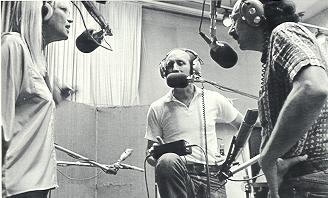
And it was with some astonishment for each of them that their
reunion was working, that the magic for them still was there. Their split had
never been irreconcilable, of course. Certain issues had remained unresolved,
questions unasked. But they had kept in touch, left doors open. The notion of a
reunion had been raised many times, if not by themselves then by others. The
answer had always come up no. "We had to feel our getting together had a
meaning and a validity beyond just the job of making an album, doing a
tour," Peter said.
But to everything there is a season . The trio twice
found themselves joined for benefit performances last year. "We put in a
day's rehearsal," Peter beams, and "It was electric! It was wondrous!
We always had our most exciting moments when we were sharing what we had in the
context of something we believed in."
The warmth of this reunion, at last undertaken, has exceeded
their expectations. "If there was a mission that I had personally to come
to the group for," offers Noel, "it was to see this healing take place
within ourselves and with the other two. This has been a very gentle joining of
the spirits." He sees the album as a record, "not in the vinyl
sense," of what happens when three people who cared deeply about each other
come together after eight years and find they are able to experience again what
they have to share. "The word for it is 'synergy'."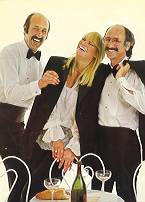
What we are trying to express is wrenched forth from things
much more fundamental than the anticipation of the marketplace," says
Peter. "What emerges is what has to emerge, and that is the true
nature of our interaction."
Mary amplifies these sentiments. "It is a reunion of the best sort. There
is surprisingly little reminiscing and a lot of what we want to say about life now."
She contemplates the way they have been able to "drop back into one
another's lives, share what we have learned, say 'I love you' to each other and
express such positive feelings. Maybe it is important at this particular moment
to say that there can be that kind of continuity. Maybe that's a gift we didn't
even anticipate."
© by Myrna Davis
Tour Director: Shelly Belusar
Tour Manager: R. Mac Holbert
Road Manager: Armando Hurley
Production Manager: Gleen Goodwin
Sound Engineer: Stan Johnston
Lighting Designer: Danny O'Bryen |
Tour Program:
Design: Milton Glaser; Inc
Text: Myrna Davis
Photography: Matthew Klein
"March On Washington" Photograph: Barry
Feinstein |
|

 The
extraordinary decade in which the trio flourished saw popular music become
one of the dominant expressions of the culture, a culture torn by the youth
revolt, the sexual revolution, conflicting attitudes about the war in Viet
Nam, civil rights, and the shocking assassinations of President John F.
Kennedy, Robert Kennedy and Martin Luther King. In the midst of chaos,
PP&M's star rose beyond their farthest imaginings. Folk music was not
exactly a vehicle for grand ambitions at the time, and they had no way
of knowing they were on the verge of a musical explosion that would thrust
them into a whole new sphere of visibility and consequence.
The
extraordinary decade in which the trio flourished saw popular music become
one of the dominant expressions of the culture, a culture torn by the youth
revolt, the sexual revolution, conflicting attitudes about the war in Viet
Nam, civil rights, and the shocking assassinations of President John F.
Kennedy, Robert Kennedy and Martin Luther King. In the midst of chaos,
PP&M's star rose beyond their farthest imaginings. Folk music was not
exactly a vehicle for grand ambitions at the time, and they had no way
of knowing they were on the verge of a musical explosion that would thrust
them into a whole new sphere of visibility and consequence.
 Peter
Yarrow talks about the past eight years. Soon after the group broke up, he
decided with his wife Mary Beth to move to California with their two small
children, Elizabeth and Christopher, and establish a closer way of living.
"Over that period of time I think the only thing could ever have equaled
what PP&M had were our families, our children." They settled into an
airy house in Malibu overlooking the Pacific.
Peter
Yarrow talks about the past eight years. Soon after the group broke up, he
decided with his wife Mary Beth to move to California with their two small
children, Elizabeth and Christopher, and establish a closer way of living.
"Over that period of time I think the only thing could ever have equaled
what PP&M had were our families, our children." They settled into an
airy house in Malibu overlooking the Pacific.
 PAUL
PAUL
 Before
Mary Travers added her voice to the trio, she had been what she calls "a
hobby performer." As part of PP&M, she confesses, "I never talked,
never made an introduction. In the beginning I was too terrified and in the end
too role-bound." So learning to confront an audience, to conduct a band, to
handle the whole responsibility became her challenge. And she learned.
Before
Mary Travers added her voice to the trio, she had been what she calls "a
hobby performer." As part of PP&M, she confesses, "I never talked,
never made an introduction. In the beginning I was too terrified and in the end
too role-bound." So learning to confront an audience, to conduct a band, to
handle the whole responsibility became her challenge. And she learned.

